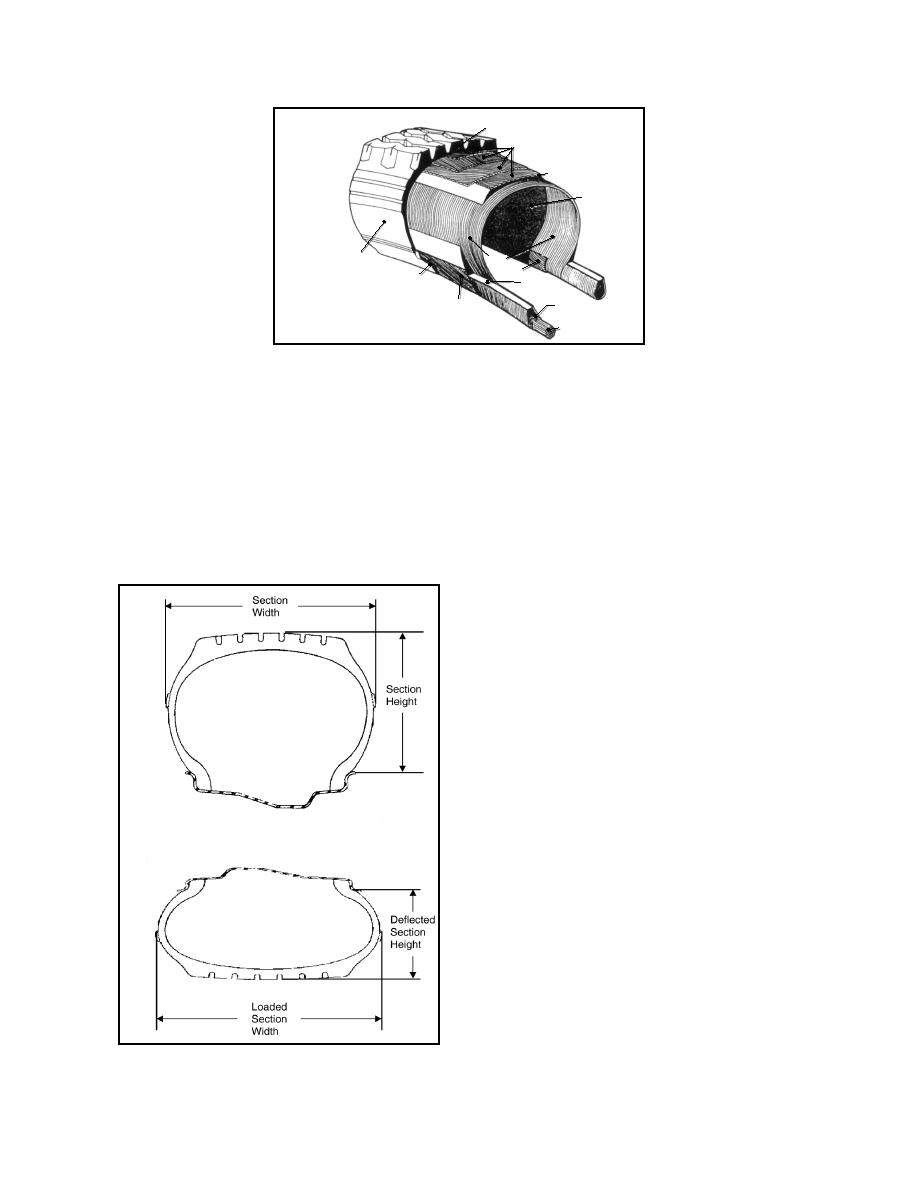
Tread Rubber
Belt
Belt Cushion
Inner Liner
Sidewall Rubber
Ply
Filler
Bead
Rubber Chafer
Apex
Bead
Filler
Wrapping
Bead Wires
Figure 7. Construction components of a radial ply tire.
(After Goodsell 1995.)
TERRAIN MATERIAL MODELS
Tire deflection is a primary measure of the tire
structural response to load and is often reported based
on inflation pressure and vertical load. Deflection is
Terrain substrate subjected to vehicle loads has
the difference between the unloaded and the loaded
been represented using a wide variety of material
section height (and is sometimes reported in percent-
models, including elastic, non-linear elastic, visco-
age, normalized by the unloaded section height). The
elastic (Pi 1988), and elastic-viscoplastic (Saliba
tire cross section and the deformation of the cross sec-
1990). Recent studies have concentrated on using
tion under load are illustrated in Figure 8. A thorough
either cap DruckerPrager plasticity (Aubel 1993,
discussion of tire mechanics is given in Clark (1981).
1994, Fervers 1994) or critical state models such as
the Bailey and Johnson (1989) soil compaction model
implemented by Foster et al. (1995) or a new critical
state model (similar to Lade and Kim 1995) imple-
mented by Liu and Wong (1996). Comparisons be-
tween the DruckerPrager and Camclay models for
tireterrain interaction have been published by
Meschke et al. (1996) for snow and by Chi and
Tessier (1995) for soil. Although the Camclay
model is perhaps the most widely used soil model,
both of the above studies comment on convergence
problems when using Camclay. The choice of mate-
rial model is based on balancing the type of behavior
desired in the model with the information available to
determine model parameters. The terrain materials
simulated in this study were fresh snow and com-
pacted sandy soil. The two material models used
were a modified DruckerPrager with a cap, and a
critical state, crushable foam model. Both models
were considered suitable for capturing the highly
compressible behavior of natural fresh snow. The
compacted sand was modeled using the modified
DruckerPrager cap only. A description of these
models, model parameter determination, and valida-
tion of the material models with test data follows.
General concepts for plasticity models
The purpose of a plasticity model is to define the
Figure 8. Measurement of tire dimensions.
permanent deformation of a plastic material. This is
5



 Previous Page
Previous Page
